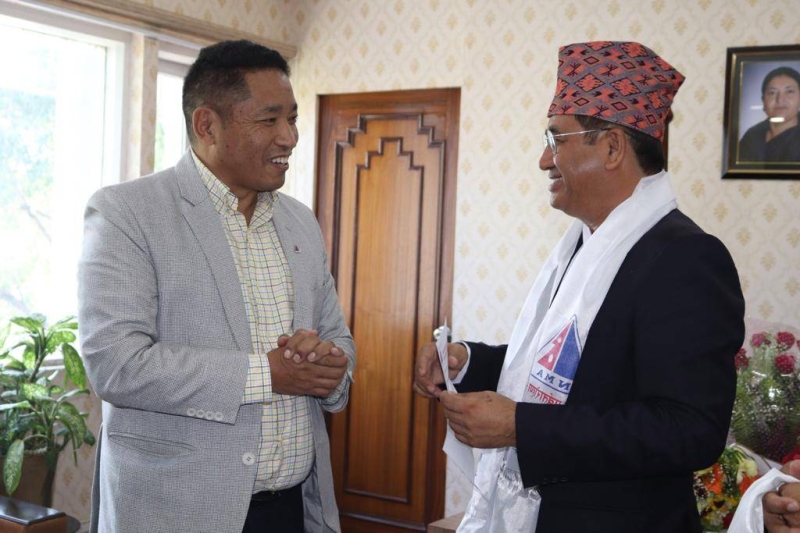EDITORIAL - Mountain tourism
It is most unfortunate that the Sherpas continue to live in poverty
ByPublished: 11:50 am Jul 21, 2022
Nepal's mountains attract tens of thousands of visitors every year, some to go on expeditions, others to marvel at their sight up-close. Closed to outsiders until 1951, mountaineers started trickling into the country after Everest was conquered on May 29, 1953 by Sir Edmund Hillary and Tenzing Norgay. Although the tallest peak has been summited by more than 6,000 people, it has not lost its appeal, and other high mountains, including eight of the 14 eight-thousanders, remain just as popular. But tourists just don't come to Nepal to climb tall mountains - smaller peaks of upto 6,500 metres, such as Mera and Island peaks, are favourites among novices with little or no mountaineering experience. Over the decades, mountain tourism has come to be firmly established in the country, generating employment for the people in the hinterlands and contributing significantly to the national coffers. Nepal Mountaineering Association (NMA), the country's only alpine club, is, thus, seeking recognition of mountain tourism as a national industry and has asked the government to introduce a one-window policy.
In a charter submitted to the Minister of Culture, Tourism and Civil Aviation the other day, the NMA president has demanded, among others, that mountaineers with a climbing permit be allowed to also indulge in other adventure sports, such as paragliding, skydiving and skiing on the same mountain. Govern-ment regulation requiring a liaison officer to accompany each of the expeditions to different mountains has been a sore point between the ministry and the NMA for long. The liaison officer, who is holed up at the base camp during the expedition weeks, is meantto solve problems related to climbing and also monitor the weight of the load carried by the porters.
However, a scam involving a group of liaison officers who awarded summit certificates to fake Everest climbers in 2019 raised questions about their integrity and credibility. The NMA has, therefore, demanded that a small contact office with government employees be set up instead at the base camps to monitor climbing activities throughout the mountaineering season.
In the charter, the NMA has also shown concern for the welfare of those families who have lost their breadwinner on the mountain and about keeping the mountain environment clean. It is most unfortunate that the mountain community that has helped put thousands of foreign climbers atop various peaks continue to live in poverty even though mountaineering activities have been vibrant for decades. This can only be so because they are poorly paid and exploited, while commercial expedition organisers abroad and their local agencies benefit highly. Similarly, Nepal's mountains have become polluted by the climbers, who leave behind oxygen tanks, tents and other trash. Everest has even been unfairly awarded the epithet 'world's highest garbage dump.
So the question is, who should pay for the clean-up and the welfare of the mountain community – the Nepal government, foreign companies that organise the expeditions, or the local trekking agencies? The government has many other tasks at hand, and it certainly cannot be expected to do everything.
Housing guideline
The parliamentary Development and Technology Committee has instructed the government to amend the Town Development, Urban Planning and Building-related Basic Guideline-2015 after wider consultations. The guideline was issued following the devastating earthquake in 2015, and it was revised in 2021. In its observation, the committee found that the revised guideline further made it narrower, and it was against the government's policy of building green, clean and safe cities.
The panel has said the guideline should be revised based on geographical locations - Tarai, hills and mountains - as well as the settlements of people in the cities and rural areas. A uniform basic guideline would not address the geographical conditions of the country and the natural disasters likely to occur there. While some of the lawmakers viewed that the guideline was lax so as to serve the interest of housing entrepreneurs, others viewed it was not practical to force the people to leave 30 per cent space open on a small plot. Considering their opinions, what can be said is that one-size does not fit all.
The basic guideline must be formulated based on the country's geographical condition. The local levels should be allowed to develop a policy on their own.
A version of this article appears in the print on July 21, 2022, of The Himalayan Times.



